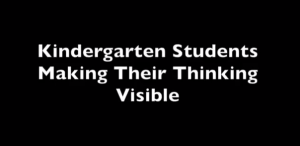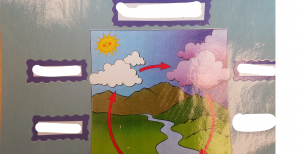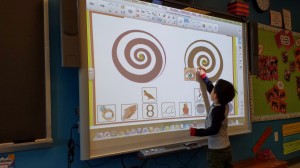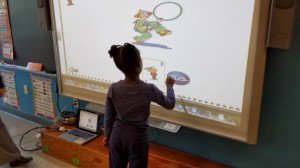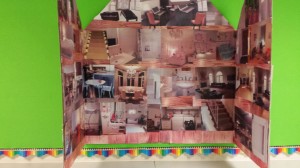Our Kindergarten students just completed their unit of inquiry on water. Over the past several weeks, the students used the Educreations app to make their thinking visible in response to questions drawn from the lines of inquiry for the unit. Here is a short video about the project with examples of student work in Spanish and French.
Lessons Learned
Instructional Technology - International Education - Wellness
Tag: kindergarten

Cecilia Rios, kindergarten teacher extraordinaire, worked with her students to create an eBook using the Book Creator app for their early childhood assembly. It is an excellent example of using technology with preliterate students to use their artistic and oral speaking skills to share their understanding. In this case, they communicated their understanding of how they demonstrated respect. Check out the link to the video of their presentation.
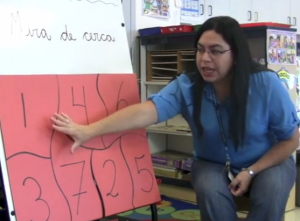 Cecilia Rios, a Kindergarten teacher at Washington International School, shares her interpretation of the “Zoom In” thinking routine in the following video. As I recorded the teaching session, I marveled at how Cecilia pushed her students to analyze information and make connections while speaking in Spanish.
Cecilia Rios, a Kindergarten teacher at Washington International School, shares her interpretation of the “Zoom In” thinking routine in the following video. As I recorded the teaching session, I marveled at how Cecilia pushed her students to analyze information and make connections while speaking in Spanish.

The Kindergarten students are starting a new unit called Let’s Use Our Imagination. We began the unit in ICL class with a hook. The students visited the National Gallery of Arts Kids Art Zone site to try some interactive creation tools. We learned a little about the artist Henri Rousseau, primarily how he used his imagination to paint jungle scenes. The students then used the interactive tool to create their jungle scenes.
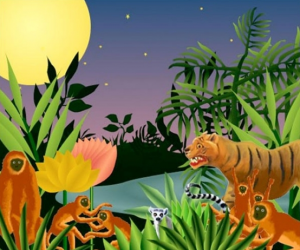
A second tool in the NGA site for using imagination to engage creativity is the Sea Saws. The students choose from a variety of digital pieces of wood, shells, stones, sea glass and other objects to piece together a work of art.
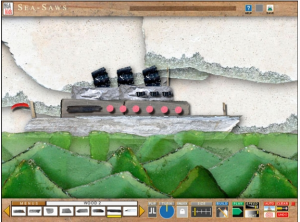
We are now moving into the story creation process with the goal for each student to create a screencast story. The first lesson was to brainstorm using the iPad’s Popplet Lite mind mapping app. Popplet is a super app for storyboarding, as one can draw pictures and text to reorder the “popplets” around the screen. The Kindergarten students took to it very quickly as I challenged them to think about three or more possible topics they would like to create a story about. As they are not literate, seeing them use their minds to think visually with their story ideas is fantastic. See one example of a student brainstorming at the top of the post and one below.
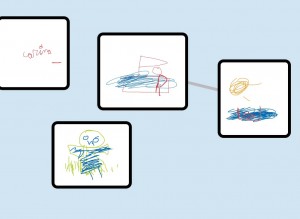
In next week’s lesson, the students will again use Popplet to choose their story topic to then storyboard each page of their upcoming digital story. They will draw simple sketches to depict what is happening at each stage of their story. We will then use one of the art apps to draw the illustrations for each page of their screencast. The Kindergarteners are adept at drawing on the iPads.
The last stage of the project will be when the students insert each of their illustrations into the Educreations screencasting app. They will then record in Spanish or French what is happening with each image to tell their digital story.
Image Sources
I put up a post in March describing the scaled assessment technique we would be using with the Kindergarten students. They just completed the unit on water. We challenged them to use the Educreations app to answer two questions:
- What is the water cycle?
- What do you know about water?
Here is the link to one of the videos by a student from a Spanish classroom. Besides the finished product, it was very helpful for the students to mentally process their answers to then find ways to make their thinking visible.
I am collaborating with our excellent Kindergarten team of teachers to prepare an assessment for their students. The students will use Educreations on the iPad to draw and voice their understanding of the water cycle. They are experienced in screencasting.
We will provide three levels of scaffolding for this project by inserting blank images of the water cycle into Educreations. The first level of support will be the image below that the teachers use in class so the students are familiar with it. The words describing each stage of the cycle are blanked out, which should prompt the students to remember from their classroom lessons.
The second image provides less support leaving it up to students to draw arrows and provide precipitation. The image will be new to the students.

The third level of scaffolding will be not to have an image, thus leaving the students with a blank canvas to draw in their understanding of land, water, and atmosphere. We have a few weeks of lessons until the students make their thinking visible. I will then post a new post to share examples of their work.
Recently I spent some time in two classes where the early childhood teachers seamlessly used technology to help their young students reach the learning goals for their respective lessons. Cecilia Rios teaches one of our two Spanish Kindergarten classes. She is a leader in our iPad pilot and uses her interactive whiteboard (IWB) in a student-centered manner. With one of the biggest and deserved complaints about IWBs being that they are often used just for direct instruction, it was nice to see Cecilia’s students interacting with the software on the board. The students were comfortable answering questions by moving to the board to manipulate digital objects.
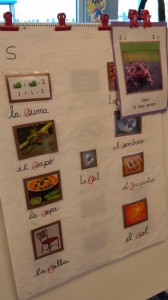
Cecilia’s room is filled with images, objects and descriptors to immerse her students in the Spanish language.
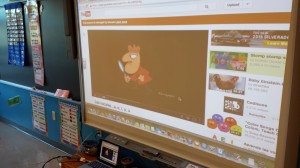
Movement, singing, and hands-on activities are a big part of our early childhood program. The teachers tell me that learning a second language also involves social engagement and games to help students learn within routines that use language. Teachers like Cecilia also bring in digital media (see image above) so that students can see and hear Spanish in a fun and engaging way.
I also spent some time in Rebecca Courouble’s French Pre-Kindergarten classroom. Rebecca is another one of our tech leaders. Besides using her IWB for interactive language work, Rebecca created a series of online video storybooks with pages from books where she virtually reads to her students. Rebecca also has a Moodle site rich with resources to extend learning beyond the classroom. She will be one of my models as we work to further our efforts to provide a blended learning environment for our students.
________________
One of the many wonderful aspects of the Primary Years Programme (PYP) of studies is the conceptual nature of the learning goals. Built along the same lines of Understanding by Design, the PYP curriculum starts with the end in mind focusing on the learning goal. The learning goal is all about big ideas that connect to multiple disciplines.
The Kindergarten students recently finished a unit about homes. The inquiry unit had the students pondering questions about the various ways and reasons why people build their homes the way they do. While the goal was to understand how homes are designed to fit the needs of the people and their localities, the students started their learning pursuit by looking at the similarities and differences of each others’ homes. They took photos of rooms in their houses and then worked with their teachers to build a three-dimensional composite. An example of their work is below.
My wife and I have been very fortunate to work with outstanding art teachers in our schools. My current school is the same. As part of the Kindergarten curriculum, the students study the artistic styles of Miro, Picasso, and Pollock. The Kindergarten students just completed their Pollock interpretation, which provided some beautiful paintings. A minor technology connection is that the students used the Mr. Picassohead drawing site as a follow-up to their Picasso unit of study.
Here are some examples of their work, including a newly painted book cart for the library.
© 2024 Lessons Learned
Theme by Anders Noren — Up ↑
